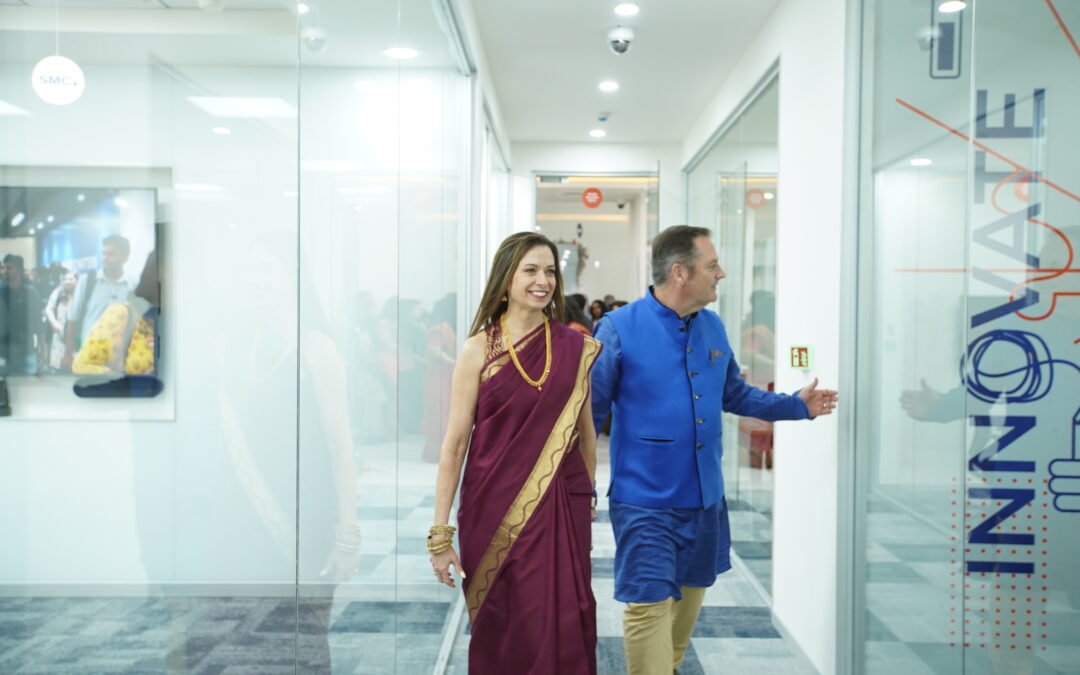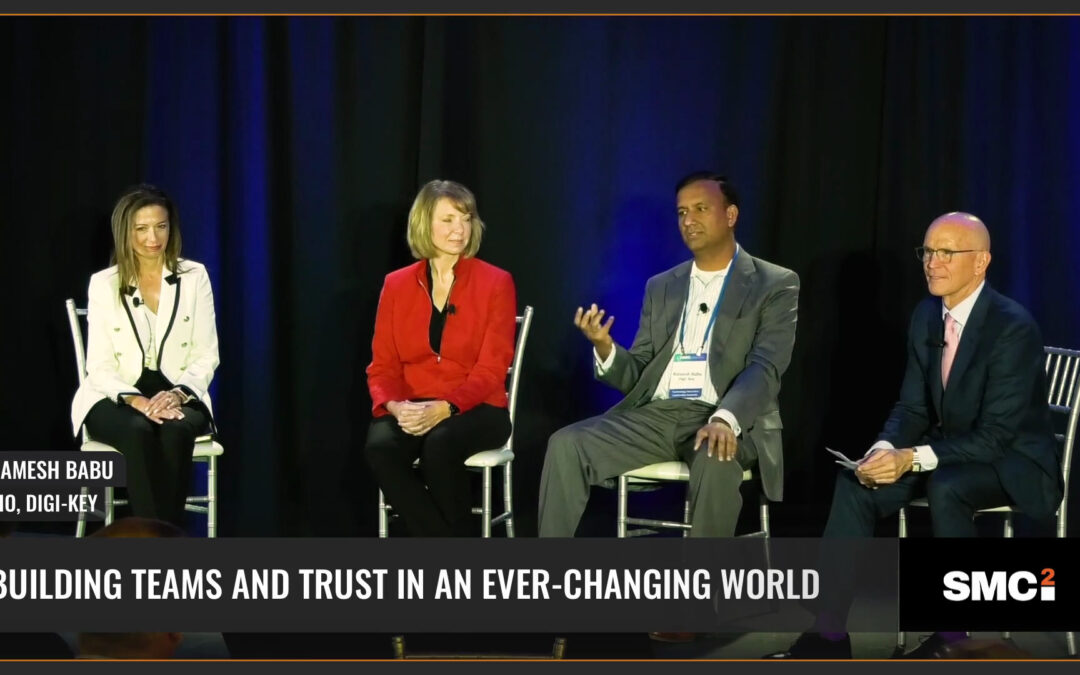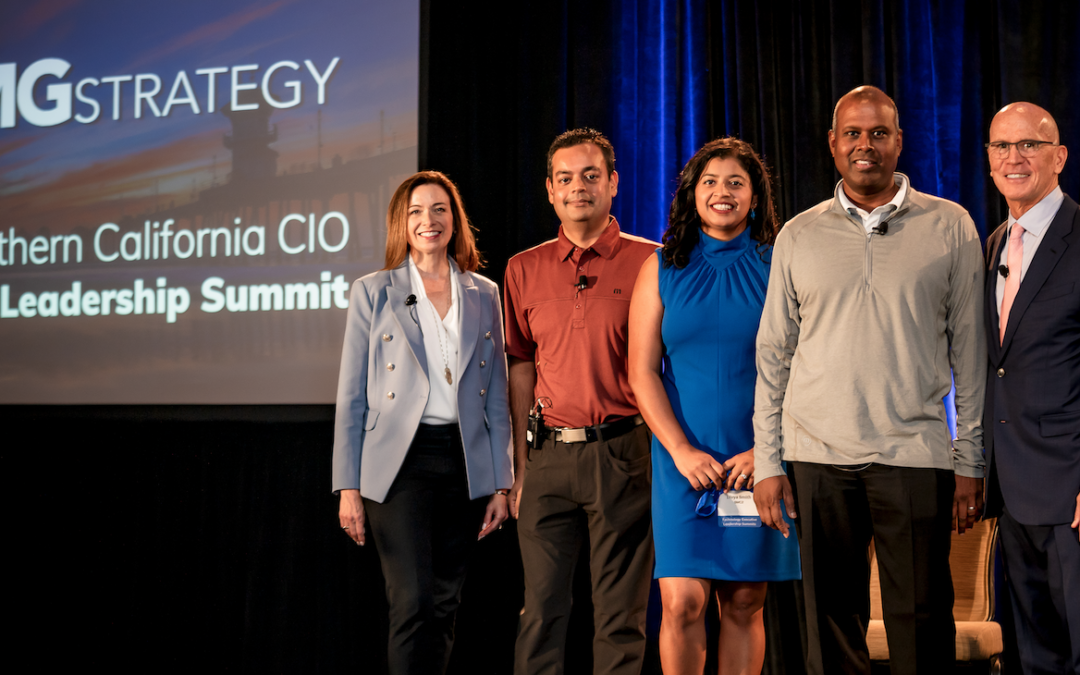

How Do You Address the Challenges of a Hybrid Work Model?
How to Build a Productive Work Culture in 2021
Editor’s note: This article is the second in a two-part series to help IT leaders as they’re planning for a hybrid work model. You can read the first part here.
While organizations across the globe are being challenged to re-evaluate their workforce models, the hybrid workplace creates varied and arguably unique challenges for IT leaders.
At a time when IT leaders are at the forefront of their organizations to accelerate digital transformation (link to digital transformation article), promoting innovation amongst a team can be more challenging when team members can’t physically gather together to collaborate.
At SMC Squared, we’re actively working to evaluate how to evolve our workforce strategies. “What we’re finding in India, in particular, is that many employees have moved out of the city and back to their native towns. This, combined with the current increase in demand for IT talent is creating challenges for companies as they prepare to bring employees back to the office,” says Malahar Pinnelli, Managing Director.
“That being said, many traditional Indian homes are not set up to accommodate work from home spaces, so the key will be to successfully address the pros and cons of both the cultural and operational challenges of working remote and working in an office.”
While there’s no one-size-fits-all solution, here are several key operational, cultural, and social considerations that companies should consider as they move to a hybrid workforce.
Operational Preparations
While an organization may be ready for employees to return to the office, many may be hesitant to take the first step because they want to ensure they can operationally provide employees environments that are safe and avoid any associated Covid-19 cases.
Leaders will need to consider how to ensure and enforce employee self-discipline as it aligns with social distancing and hygiene norms. It may be a fine balance that employers will have to navigate in order to ensure employee safety while not concerning or offending employees.
Facility planning and reorganization will need to be considered to minimize contact and maximize sanitation. How many team members will you allow in meeting rooms? Will office seating still be able to remain the same as it had been previously? Do your dining facilities provide a safe place for employees to take breaks? All of the activities that employees perform as a regular part of their day in the office will need to be evaluated.
Collaboration, Participation, Mentorship
Business leaders often speak of the overall vision and purpose of their organization, a key understanding, in particular, for talent that has been outsourced to help drive digital transformation needs. But, how will leaders retain these employees if the hybrid model becomes the new norm? Especially when employees will likely weigh their options based on the parameters of what companies remote or hybrid models now look like.
For any team to be effective, they need to collaborate and promote an environment that allows for active participation. Companies will need to consider how to educate and support leaders to run effective teams from afar while emphasizing the importance of being available and proactively planning regular opportunities for their teams to be involved. This will allow them to stay on top of employee contributions, satisfaction, and needs for growth and mentorship.
In a hybrid world, assimilating new team members, in particular, may be a challenge especially if new hires are not able to meet all of their coworkers face to face. Company culture may be more difficult for new hires to understand when they’re onboarded remotely.
“New employees who have not really “lived in the culture of the organization” often find it difficult to develop and connect with an organizations’ vision, purpose, and key cultural elements. It makes it imperative for leaders in the organization to own and continually drive engagements to instill a sense of belonging,” says Director of HR Supriya Ambuga.
In addition, support roles may need to be relied on heavily to ensure that digital infrastructure is put in process for timely support of all employees.
Cultural Considerations
For IT leaders who are working with an extended global team, culture has always been a key consideration in understanding how to maximize productivity and output.
However, leaders should now consider how employee aspirations and preferences have changed because of the pandemic and how to address these changes upfront.
For example, US travel might no longer be an aspiration for outsourced team members so what are the other ways that we can motivate employees? With varying degrees of safety and comfort, individual travel preferences have changed and will need to be considered as well. How do we handle the communication gaps that arise out of informal conversations that happen in-office without cohesive or timely documentation to share and communicate with remote colleagues which can derail collaboration?
Navigating Office Politics
With limited opportunities for face-to-face interactions, which would usually build relationship best practices, how will leaders foster a culture of collaboration and trust, ideate, and express results in more cohesive and higher-functioning teams?
“HR leaders will want to consider how they train the leadership and managers on the hybrid model to avoid the complications of feelings of isolation or performance not being recognized. I would anticipate “Out of sight out of mind” scenarios on the part of the remote workers and even potential feelings of resentment, jealousy, and unnecessary comparisons from team members whose roles mandate them to be in office,” says Ambuga.
Leaders may need to consider integrating more opportunities for team building through virtual team outings or cross-team events. Careful consideration will need to be made for how to nurture a workplace that’s free of biases against people who are working remotely.
While conflict is a natural part of any work environment where teamwork and collaboration are involved it is typically easier to manage conflict when people meet face to face, discuss and find common ground. In the Hybrid model, managing conflict can certainly become a challenge and there are higher chances of issues being buried because people chose to avoid it until it becomes a greater problem or people make assumptions on perceptions and overreact.
Bonus: For HR Leaders
As you navigate the new normal, make sure to involve and rely heavily on HR leaders who can help implement and enforce new strategies to attract and retain employees.
HR leaders may want to consider the following questions:
- How do we establish appropriate protocols for disagreements and timely interventions by leaders with the support of HR? How do we sensitize managers to be on top of conflict management?
- How do we mitigate the risks of dual employment (two jobs, one person) which is easier to do with remote working?
- How do we help employees balance personal life if the coming to office is not on fixed days (Child care, parental care, etc)?
As people have adapted to working remotely over the last year, a mindset change will be needed to prepare employees in all roles to adapt to a new way of working hybrid.
No matter how you prepare, the hybrid work model for each company will inevitably be a work in progress. Contact us for a complimentary strategic assessment to learn how SMC Squared can help you build teams that are prepared for the hybrid work model.
How will you build your hybrid team? Click here for a complimentary Strategic Assessment to learn how SMC Squared can assist with your hybrid work plans.
- To learn more about SMC Squared’s approach to building an employee-centric team, click here.
- Read more about how SMC Squared partners with clients to save an average of 42% on IT talent as they turn to our innovative Global Insourcing Centers.
- Want to go inside a GIC? Click here.
For more information contact:
Trent Michaels
Director, Business Development
trent.michaels@smc2.com
More Perspectives:

SMC2 Sponsors Annual SIM DFW Golf Invitational
Topgolf Callaway Brands shares their global talent strategy at the HMG Strategy 2022 Southern California CIO Executive Leadership Summit.

SMC Squared Expands Footprint in India, Unleashing Global Capability Center Potential
SMC Squared, the US leader in Global Capabilities Centers, annoiunces the opening of its state-of-the-art offices in India.

How Digi-Key Builds Teams and Trust
“This is a master class on building a world class culture, a world class organization, and really understanding how to compete on a global stage,” said Hunter Muller, President and CEO of HMG Strategy.

How TopGolf Callaway Brands grew to a $3.8B Company
Topgolf Callaway Brands shares their global talent strategy at the HMG Strategy 2022 Southern California CIO Executive Leadership Summit.
Scale Your Tech Output: Step 1
Complimentary Strategic Assessment Meeting. Send us a message and tell us when would be a convenient time to learn more about what a Global Insourcing solution can do for your organization.
